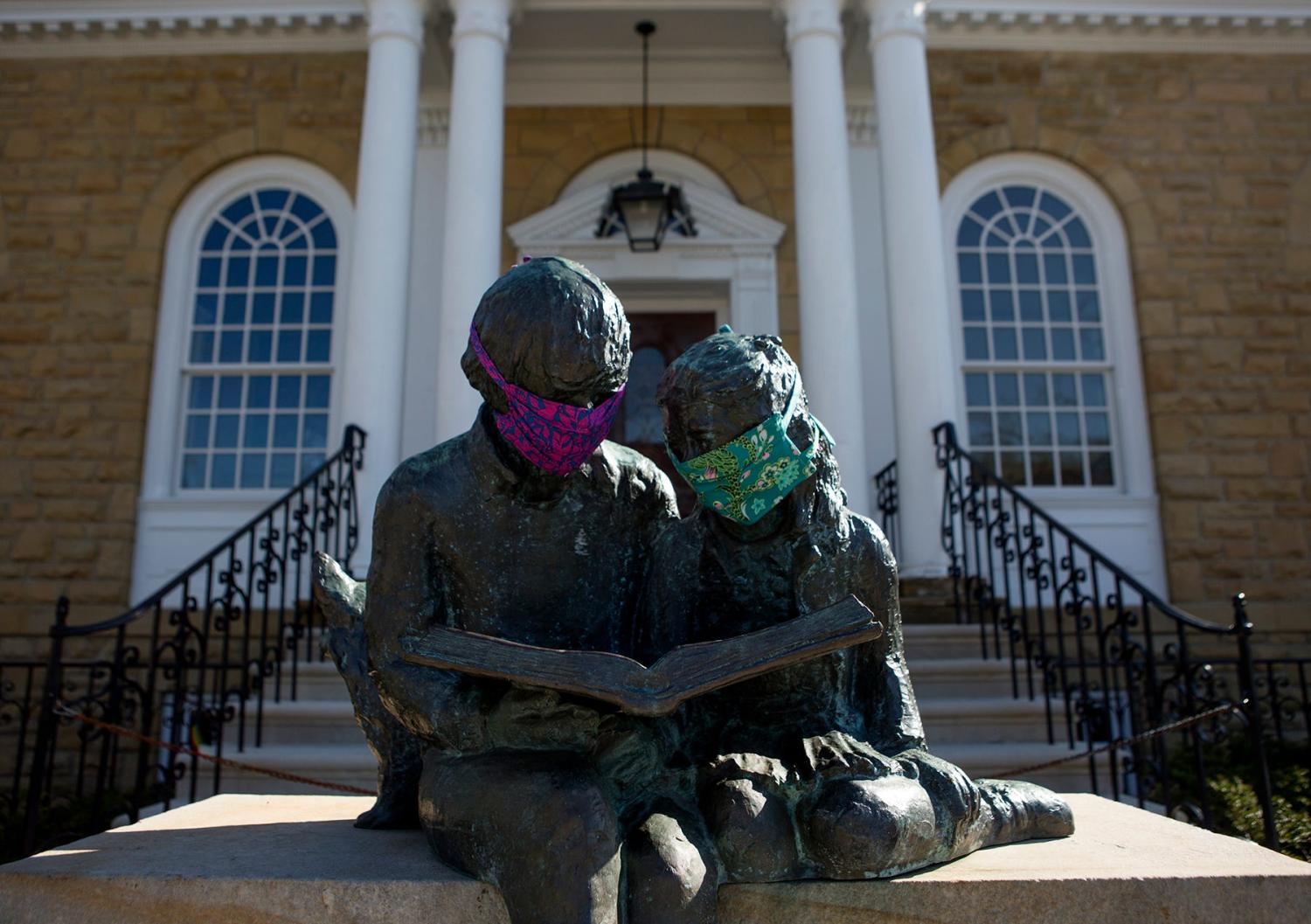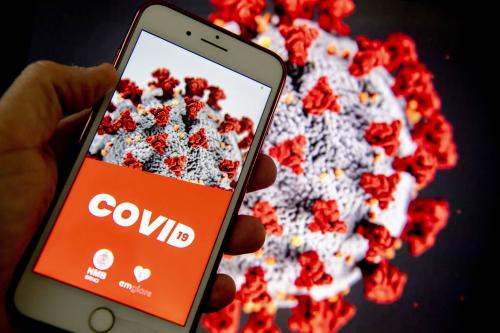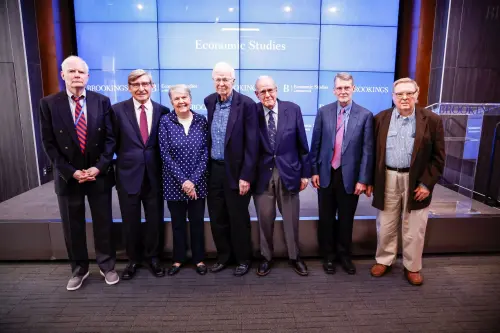“Opening up America” is about restoring the health of our society, not only about getting people back to work. A contact-tracing app, coupled with wider (though not universal) diagnostic testing, would enable more Americans to prudently go back to work, to school, and to ordinary life far more quickly than is now currently possible.
We argue here that the social benefits of an anonymized contact-tracing system are well worth the temporary privacy costs, but also that tracing must be mandatory in order to have the greatest likelihood of success in achieving the goal of opening up our economy and society. The details are important.
The ravages of the COVID-19 virus have forced nations all over the globe to curtail their citizens’ freedom of movement. The U.S. and its municipalities have been no exceptions. To combat the virus, people have been required to remain at home, to refrain from going to work or school, and to engage in the new process of social distancing. Never in American history has our freedom been so restricted.
We think most Americans agree that these restrictions on our freedom to move, to interact socially and to work have been necessary.
But now Americans look forward to when people can go back to work, when students can go back to school, and when restaurants, theaters and sports arenas can reopen. Those re-openings are not only necessary for our freedom but also for our economy and psychological well-being.
Unfortunately, winning that freedom and that return to economic vibrancy seems likely to require that as a society we submit to some other, lesser but unusual restrictions on our freedom and our privacy. These limitations will be necessary because in order to permit people to go back to work and mingle more, we need policies and mechanisms that will keep the number of infections at a low level.
At this time, America cannot rely on what is called “herd immunity” because not enough people have been exposed to the virus to cause that phenomenon, nor is it even certain at this point that people who have recovered from the infection cannot get re-infected.
Whether to submit to the lesser restrictions in favor of more fundamental freedoms is, except at the extreme, not a question of law. (The Fourth Amendment issue that has been raised is, in our view, a red herring.) It is a question of policy: whether we are willing to forego lesser freedoms in the short to medium run in order to regain more quickly and permanently our fundamental freedoms of movement, to earn a living, and to attend events and gatherings.
It is necessary to pose this tradeoff because if we simply assert that we are ready to be free and to go about our business, the virus very likely will return and we fairly quickly will be facing another round of quarantine and social distancing that would again curtail our economic and social activities. As Peggy Noonan opined in the April 18 Wall Street Journal, “No opening of America will be sustained until it’s got right.”
Some Countries are Opening for Business
Seoul, South Korea is reopening for business. There even are people in the restaurants. Koreans’ ability to do this reportedly has been made possible through a combination of testing and contact-tracing apps. Kanga Kong has traced this story for Bloomberg.com. But as described in The New Yorker, the Korean system is very invasive, using a mix of smartphone apps, monitoring of credit card records, medical records and detailed, intrusive personal questioning. It is not an approach that we believe a majority of the American people (let alone Congress and the President) would accept.
We believe that a more advanced smartphone contact-tracing app, combined with testing and self-quarantine when necessary, would be less intrusive than the Korean system, at least as effective, and more politically palatable (though we admit not without difficulty).
Fortunately, a number of contact-tracing apps are reportedly in development: One by Apple and Google, another by researchers at MIT, as well as others in Europe. Aaron Carroll has written for the New York Times Upshot page about the joint work of the Center for American Progress and Dr. Ezekiel Emmanuel’s on contact tracing, while surveying other proposed solutions for tamping down the full-blown return of the virus once we were well on “the other side” of the current infection curve. Under any circumstances, Carroll concludes that re-opening likely will be very difficult.
David Leonhardt, also of the New York Times, has reported that Singapore, which has adopted many of the steps that experts have prescribed, nonetheless has imposed a new lockdown. That is a caution that the designers of any American program should heed.
Much More Testing Is Necessary but not a Cure-All
In order to send people back to work and, eventually, to reopen restaurants, theaters, sports arenas, and most retail establishments, we are going to need a system that quickly identifies people who come down with the virus and all the people with whom they have had recent contact. Those who come down with the virus then can self-quarantine to prevent infecting others, and those who had been in close proximity can at least be vigilant as to developing any symptoms themselves—and perhaps should be taking even greater steps to protect others.
This kind of program requires a database and a notification system.
A vigorous testing regime to identify new cases also seems needed regardless of what other technology is used to track those who may be at risk. But given America’s needs and capabilities, it does not appear that fully sufficient testing for all Americans, or at least all American adults, will be ready for the foreseeable future.
In fact, to be as effective as some medical professionals have suggested, a massive testing system would have to be frequent, if not every day, then at least two or three times a week. That is because a test may reveal you to healthy on Monday though you could contract the virus a day or two later. Not only is testing capacity in America unlikely to handle such a large volume of tests any time soon if ever, frequent universal testing would be highly intrusive and still not fully effective for reasons we outline shortly.
Scott Gottlieb, former FDA Commissioner who is now back at AEI, has estimated that by fall America should be able to test 3 million per week, but that is months from now. Accordingly, the best that can be done is rigorous and frequent testing of front-line workers, especially our brave health care professionals, and testing designed to get at least a lot more people, currently deemed “non-essential” but now forced to sit at home, back to work, as Dr. Gottlieb has urged.
A contact-tracing app
The limitations of testing as a “silver bullet” to the “get-back-to-work” challenge underscore the need for a supplemental, widespread contact-tracing system, coupled with quarantines of those who test positive.
The most cost-effective way to implement such a system is through a contact-tracing app, which uses individuals’ smartphones’ Bluetooth capabilities to detect when they are in the presence of another app-enabled smartphone and to send the identities of the smartphones that it has encountered to the central database. If the system receives a report that someone has contracted the virus, then each of the smartphones that have been in contact with that person’s smartphone will be alerted to the possibility that their owners may become contagious in the next brief period of time. The exact mechanism that is used at that point is not the same in every system and is the subject of a great deal of ongoing work. The Apple-Google description of their proposed architecture provides one guide to how a system likely would work. The Financial Times published a good schematic April 20 that is useful as well.
The potential designs that we have read about would shield the identity of the people with whom any single smartphone had come into contact and would keep confidential the identity of the person who has contracted the virus. Individual identities would not be necessary for the system to do its work. According to their website, the proposed Google-Apple system incorporates these safeguards.
Building in anonymization should blunt legitimate privacy concerns about contact tracing. As the website Axios.com reported on April 17:
Consensus seems to be building globally around the idea that Bluetooth-based contact tracing could be a practical use of technology to contain the spread of the coronavirus.
Why it matters: Both governments and advocacy groups agree that using Bluetooth to sense the proximity of users’ phones could be more effective and less of a civil rights problem than tapping location-based data that apps and service providers often collect.
But a Voluntary App Will Not Do the Job
In freedom-loving America, it is likely that not enough people would voluntarily download and use the Google-Apple app or something equivalent, which of course would limit its effectiveness. That would be a tragedy because many more people will be able to regain their freedom of movement and to go back to work and play, secure in their safety, knowing that an effective smart-phone-based contact tracing system is in place.
As Liza Lin and Timothy W. Martin reported in the Wall Street Journal on April 15, “Lawmakers are learning that voluntary contact-tracing apps that claim to preserve users’ privacy, such as the one proposed by Apple and Google, aren’t effective without high levels of participation.”
But this surely will not happen so long as use of a smartphone system is voluntary. Lin and Martin noted that in Singapore, for example, “only about one-fifth” of the country’s 5. 6 million residents, “have downloaded the government’s “TraceTogether” app, even after health officials implored citizens to partake. The tally must rise by millions more to be effective, the government said.”
It is clear, therefore, that contact tracing through smartphone apps cannot come anywhere close to being adequately effective unless and until their use is made mandatory. Whenever the danger is past, contact tracing can become voluntary—or even can be put in mothballs.
In the meantime, we favor a Congressional mandate of an app-based contact tracing system, with the app to be chosen by HHS as soon as practicable, meeting objective criteria, including anonymization. The Google-Apple app may be the winner in such a competition, though it is possible one of other systems now in development may come out on top.
We understand that most policy consideration of a contact-tracing regime has focused primarily on getting people back to work. But such a focus, while understandable, does not take account of how society functions. Workers do not go to restaurants, gatherings and sports events alone. They go together with people who do not work.
Moreover, creating a society where people who work are authorized to do things that other people are not authorized to do likely will lead to pushback that will tend to discredit and impede the mechanisms on which reopening relies.
To succeed, we need a system where every American gets a leg up. We need to see ourselves as in the fight and the reopening together, as one nation, with the same liberty and justice for all.
Ensuring Smartphone Accessibility
Regardless of whether a smartphone-based system is voluntary or mandatory, every American must have the opportunity to participate. Without that, no matter how good the program will be, it will exacerbate the inequalities that already separate our society.
That means that everyone must have access to a simple smartphone and to the internet. For years, we have seen countless studies and media reports about the “digital divide” and how it must be bridged if all Americans can fully participate in our economy and society. The divide has been closing but is still too wide. The COVID pandemic fundamentally changes the debate and underscores how not being plugged into the internet not only can deprive kids of their education (as schools have gone to remote learning during this pandemic) but is now actually essential for all of us.
Congress therefore should, as part of the contact-tracing system, adopt a program that guarantees at least basic models of smartphones and basic service plans to all Americans. Many people who have older phones also may need help to get a sufficiently modern phone. In India, that would be a high percentage of people, but in the U.S., it does not appear to be. Overall, approximately 81 percent of U.S. adults owned a smartphone in 2019.
Of course, furnishing phones and internet access to the less affluent will be costly, measured in billions of dollars initially and, to some extent, on an ongoing basis. Compared with what is at stake – and huge economic costs of closing much of the U.S. economy, perhaps on an off-and-on basis for some while – that cost would be modest and would generate the added benefit of giving less affluent Americans better access to our modern economy.
Enforcement
We recognize that any mandatory system must have an enforcement mechanism, though at the same time not one as intrusive as used by China or even South Korea.
Fortunately, an effective enforcement system need not be punitive in the first instance. One approach is to permit only those who comply with the app-based system to go to work, restaurants, theaters, and sporting events, while the pandemic emergency is in place. People would then be able to choose whether to take the minimal steps necessary to protect other people – by adhering to the tracing app – in order to qualify for these sorts of freedoms, or to forego the freedoms and not comply with the app.
There should be one exception to this quasi-voluntary system of enforcement. Legal penalties must exist for those who tamper with their smartphones to make them provide false positives to gatekeepers. By analogy, we don’t permit people to tamper with smoke detectors in airplane bathrooms because doing so poses real threats to other passengers.
Periodic Checkups
A universal smartphone contact-tracing system, while it is in place until an effective vaccine is developed and widely deployed, would enable periodic monitoring of individuals’ health. The precise content of that periodic monitoring has yet to be designed, but certainly it should include temperature monitoring and, for those who have been notified that they have been exposed, their pulse oximetry reading each day to signal worsening of their disease. The exact frequency of monitoring, however, should be decided by analyzing available data and might change from time to time based on current information. (Facebook has recently rolled out a county-specific map that tracks their users’ reported symptoms, but as helpful as this tool is for monitoring county-wide developments, it isn’t granular enough for health care systems to alert specific individuals they need more aggressive care interventions).
Health surveys would also identify people who may have an incipient COVID-19 disease and therefore could recommend follow-up testing, which in turn could help to limit the number of tests that have to be conducted. The survey could be more intensive for people who had been identified as in contact with a person who has the virus.
Periodic health surveys during the pandemic emergency also could provide early detection of other diseases as well, which would bring greater efficiency to the healthcare system and, perhaps most importantly, better, more prompt healthcare to the less affluent.
What about Lost Privacy?
Lost privacy is a serious challenge to a smartphone contact-tracing system – even in an era when so many people seem to disclose their most intimate secrets on social media platforms. The ACLU, as one would expect, has expressed serious reservations about a contact-tracing app. Similar reservations have been reported in France, where contact tracing through smartphones is being discussed. Peter Swire of Georgia Tech has written thoughtfully about the privacy threats growing out of our national response to the 9-11 terrorist attack in Lawfare.
The Apple-Google app relies on anonymity for most privacy protections. But anonymity is, in practice, never absolute, and even anonymity will not completely prevent the danger of hackers.
The globally popular Israeli historian Yuval Noah Harari has written one of the most compelling essays on the dangers of surveillance. Dr. Harari’s excellent essay concretizes the legitimate concerns that many have voiced about using public surveillance system to deal with the Pandemic. Dr. Harari did not have the Apple-Google contact-tracing app specifically in mind (it had not yet been conceived when he published the cited article on March 20), but the dangers he wrote about do apply to that app, as well as to any other technological surveillance mechanism one might think of. Here are a couple of his well-phrased warnings:
“Yet if we are not careful, the epidemic might nevertheless mark an important watershed in the history of surveillance. Not only because it might normalise the deployment of mass surveillance tools in countries that have so far rejected them, but even more so because it signifies a dramatic transition from “over the skin” to “under the skin” surveillance.”
* * *
“The downside is, of course, that this would give legitimacy to a terrifying new surveillance system.”
* * *
“You could, of course, make the case for biometric surveillance as a temporary measure taken during a state of emergency. It would go away once the emergency is over. But temporary measures have a nasty habit of outlasting emergencies, especially as there is always a new emergency lurking on the horizon.”
The bottom line of such warnings is that when we use surveillance, we are always on the slippery slope toward Aldous Huxley’s dystopian vision of “Brave New World” in which Big Brother is watching all of us all the time.
Harari’s warnings raise serious issues. The line between enforcement and tyranny is a fine one. The line between data collection for the greater good and use of that data to suppress some or all of the population is, likewise, a fine one. Will government use the collected data to suppress, to mold or to alter public behavior in ways not necessary to combat the Pandemic? Will the data collection system become permanent based on some justification, such as better healthcare?
These questions cannot be answered with any certainty today. The questions must be kept in mind as the details of the system are worked out. And safeguards should be built in, though, realistically, such safeguards can never be perfect. The one minimum guardrail that is essential, and that directly responds to Harari’s legitimate concern about the permanence of surveillance, is that any mandatory contact tracing system must have an automatic expiration date, such as three months after the FDA certifies at least one effective vaccine.
The fundamental fact is that all “solutions” to the current pandemic involve trade offs. Comprehensive, frequent testing – even on a smaller and lesser scale – is invasive, and so is contact tracing. The critical question is which combination of mechanisms will be the most effective in dealing with the present crisis with the minimum threat to our freedoms and privacy.
For the foreseeable future, we face a very deadly and hugely costly pandemic. We can elevate privacy or any other value to an absolute, but at our immediate peril. We believe that a time limited risk of privacy loss is a risk that most Americans will accept in order to avoid the very losses we will suffer if an effective system of mandatory contact tracing is not soon adopted
As former FDA Commissioner David Kessler wrote in the New York Times on April 20, we need a new social contract in order to deal with this pandemic. “No man [read “person”] is an island,” John Donne wrote in 1623. Americans need to digest the fact that people do not fight a pandemic individually; they fight it together; as a unit; as a society. And having digested that idea, we need to act accordingly.
Our modern society is lucky to have technologies and abilities that previous societies did not have to fight the diseases and plagues that afflicted them. We need to harness the innovation of tech – perhaps even “big tech” – to halt the spread of the disease so we can get the economy off the debt ventilator. If we want to have a modern world at all, we must use the power of technology to help to get us there.
The authors did not receive financial support from any firm or person for this article or from any firm or person with a financial or political interest in this article. Neither of the authors are currently an officer, director, or board member of any organization with a financial or political interest in this article.







